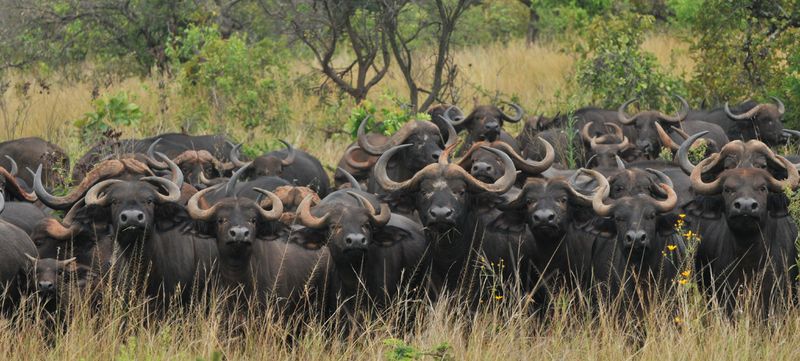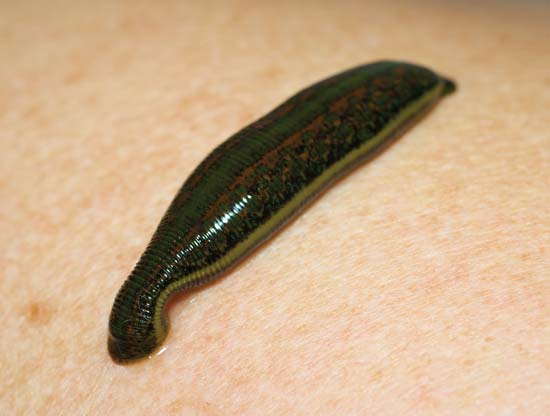Ecosystems and interactions
Our various environments are composed of a wide variety of living and non-living things. Human life depends on the connection it has with other living things.
THE GREAT BARRIER REEF IS A ECOSYSTEM THAT SPANS MANY KILOMETRES ALONG AUSTRALIA'S EASTERN COASTLINE
Ecosystem:
Ecological community together with its environment, functioning as a unit.
Ecosystems exists all around our planet, they can be as large as an ocean/desert or as small as a puddle/rotting log
Ecosystems are divided into two pretty distinguishable components:
- Biotic: Living
- Abiotic: Non-living
Species Vs. Population Vs. Community
Species:
Group of related organisms that share similar characteristics and are capable of reproducing
Population:
Species from the same group living together in the same area
Community:
Populations of different species living and interacting in the same area
Basic Needs
An ecosystem that provides the following basic needs increases the likelihood that organisms will survive and thrive in that particular area:
- Oxygen
- Water
- Nutrients
- Energy
- Suitable living conditions (Not too hot or cold)
Ecological Relationships
Symbiosis:
Different living things living together wherein the relationship can either benefit one organism, harm one organism or benefit both organisms.
3 Types of symbiotic relations are:
1. Commensalism
2. Mutualism
3. Parasitism
Mutualism:
Both species benefits
Commensalism:
One species benefits and the other does not benefit nor is it harmed
Parasitism:
One species benefits and the other is harmed
How do living things meet their needs to survive? ... They adapt!
Organisms "respond" to their environment:
- Organisms which are best suited will survive and produce offspring
- over time successful characteristics will be more common therefore the species will have adapted to their environment
Structural adaptations:
Physical features of an organism like the bill on a bird or the fur on a bear.
Behavioural adaptations:
The ways organisms "act" to survive. For example, bird calls and migration are behavioural adaptations.
(for 3 different animals make a T chart with two labels: Structural and Behavioural and list different adaptations that come to mind)
Why Study the environment?
Despite our removed lives in our comfy houses, with central heating and no bugs we are still deeply connected to the environment and depend on it for sustenance and survival.
Humans tend to encroach on ecosystems, studying them helps us understand how we impact those ecosystems, and how we can reduce our impacts on those ecosystems.
Ex. The Aral Sea
How do the impacts of humans on ecosystems affect the following:
- The basic needs to sustain thriving organisms
- The relationships among the organisms in the ecosystems
Environmental Interactions
Producer:
Organism that uses energy to create its own food
Consumer:
Organism that feeds on other living organisms for energy (Example: all animals)
You can classify consumers based on what they eat:
1.Carnivores – animal that eats other animals
2.Herbivores – animal that eats only plant material
3.Omnivores – animal that eats both plants and other animals
Scavengers:
Animal that eats the dead remains and wastes of other animals and plants (example: crows, ravens, maggots)
Decomposers:
Organism that breaks down the bodies or parts of dead plant or animal matter into smaller pieces (decay) (example: fungi, mushrooms, mould)
Producers
Producers synthesize their own food through the process of photosynthesis.
Plants need two raw materials to make their food:
- Water (H2O) which comes from the soil
- Carbon Dioxide (CO2) from the air.
The final ingredient that plants need is ENERGY which is attained from the SUN
As the sun is absorbed through the leaves, the energy is used to rearrange the water and carbon dioxide particles to produce two products:
- Food (Carbohydrates) (Glucose C6 H12 O6)
- Oxygen (O2)
Process of Cellular Respiration
- Process which is responsible for the release of this energy (chemical reaction)
- Combines food and oxygen to produce carbon dioxide, water and energy
What is Word Equation and What is the Vital Interaction Between Photosynthesis and Cellular Respiration?
Food Chains
Food Chain:
Sequence of organisms in a community in which each member of the chain feeds on the member below it
- Most of the Earth’s energy comes from the SUN, due to photosynthesis plants allow for other plants/animals to use this energy, without them there would be no energy in the food chain!
Water and Carbon Cycles
All living and non-living things are made up of matter which has been on Earth for billions of years
Where does the matter that living things need come from?
- The environment continuously moves abiotic factors to biotic factors and back again, this process is known as a CYCLE
1.Water Cycle (page 45 Figure 2.19)
2.Carbon Cycle (page 46 Figure 2.20)
Draw, Label and Provide the Steps to each of the Two Cycles.













